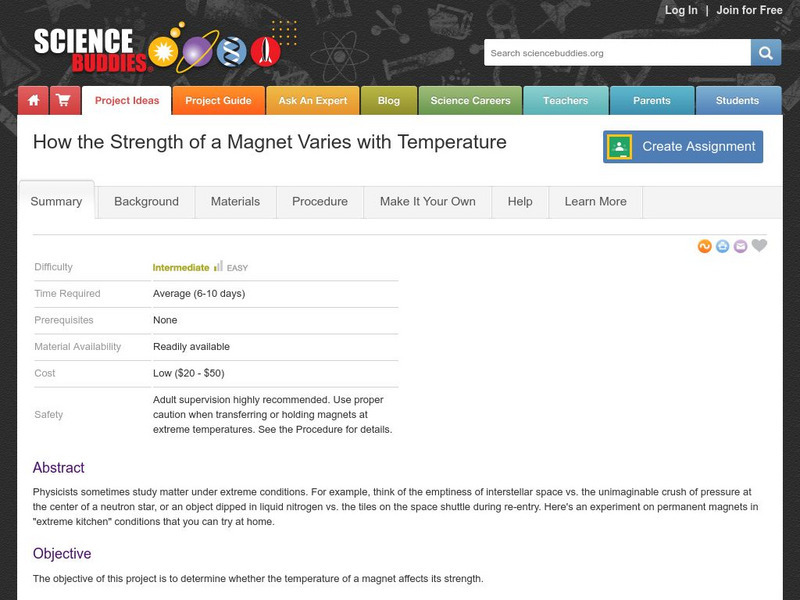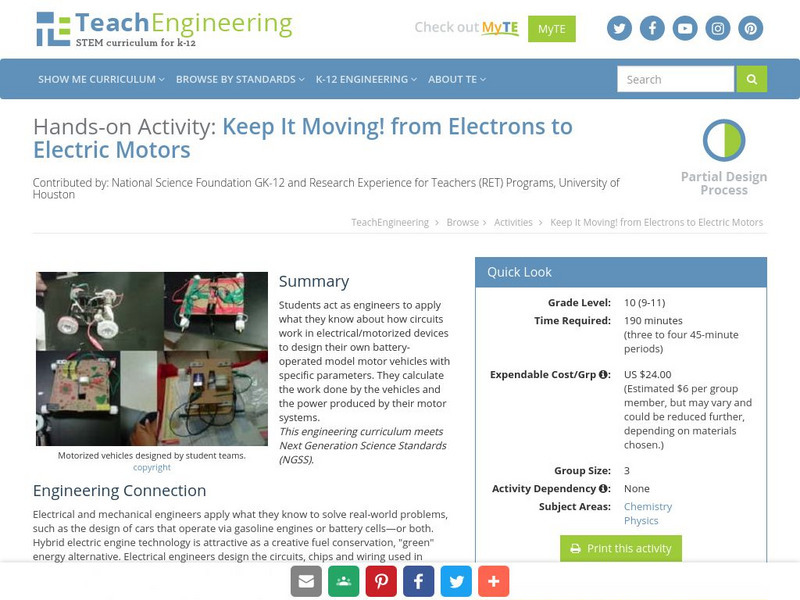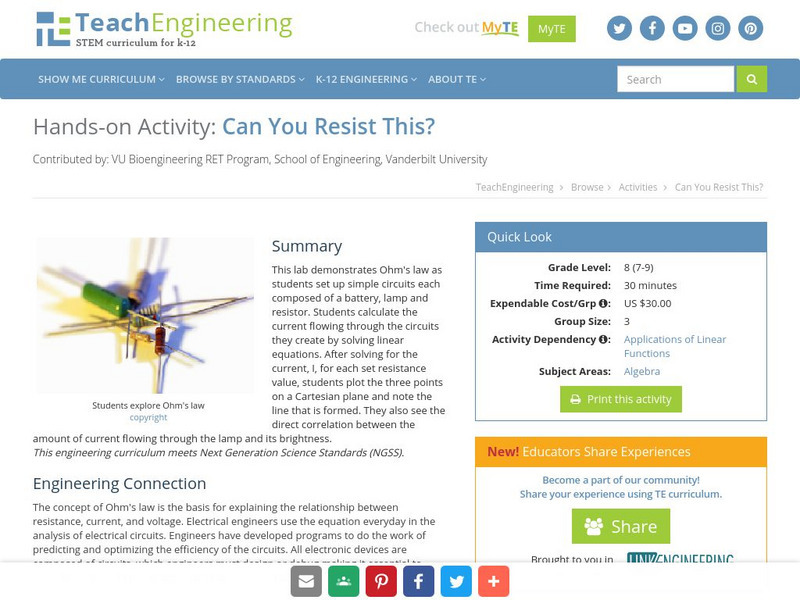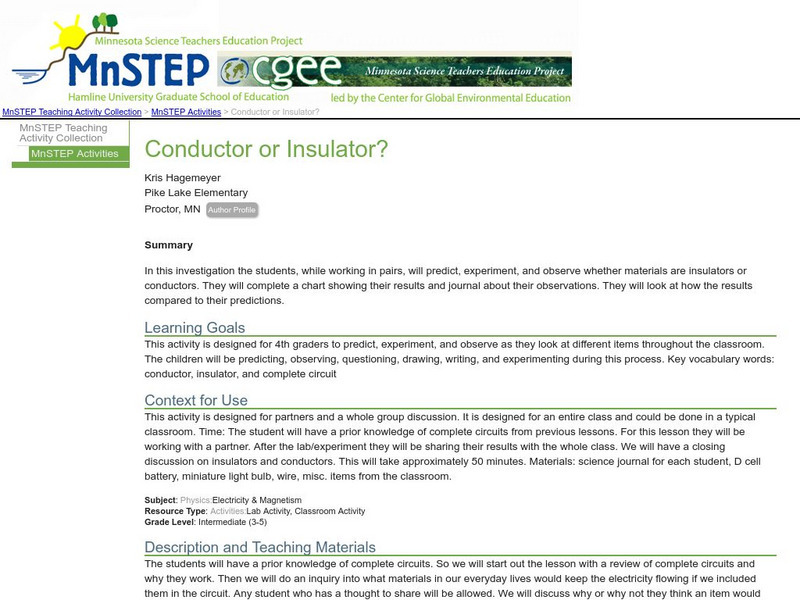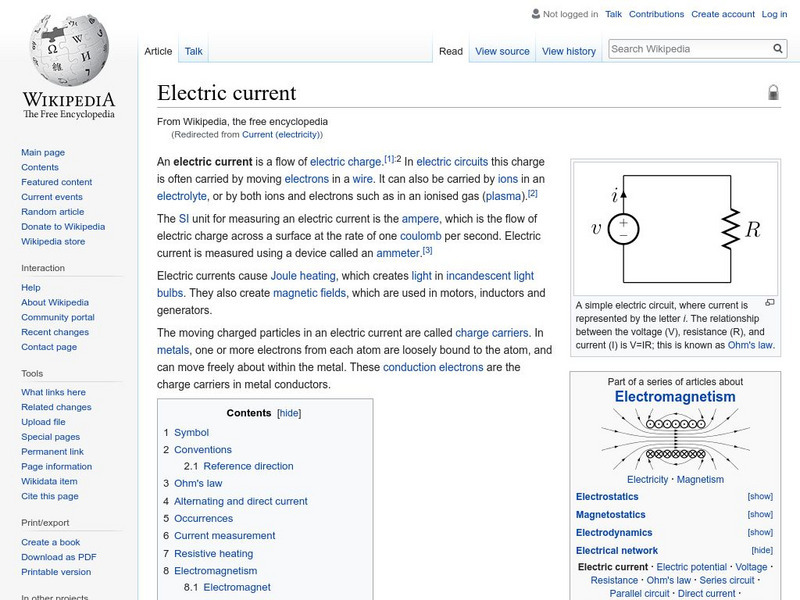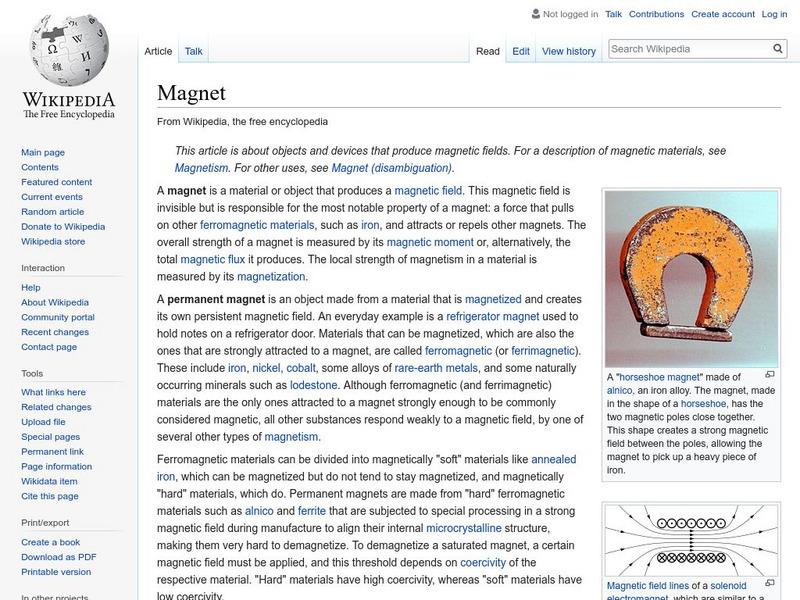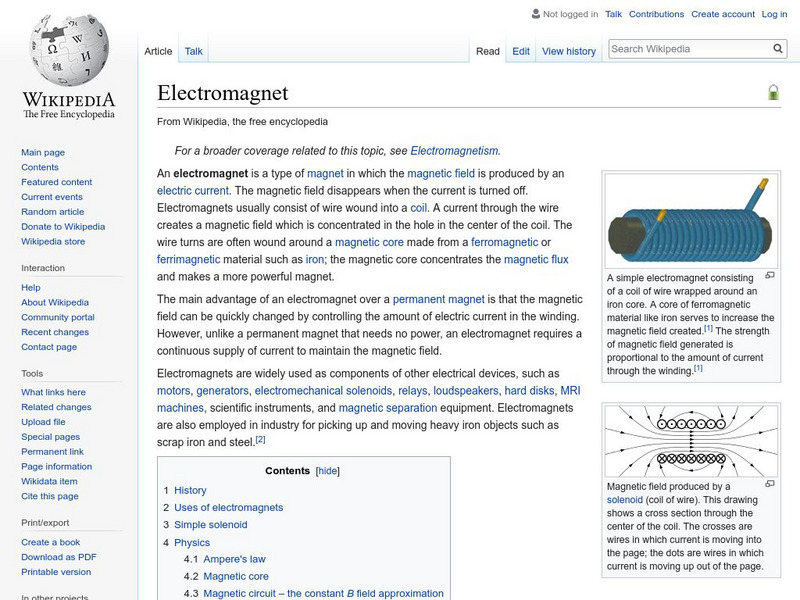Curated OER
Conductors and Insulators
Students explore electrical terms and circuits. In this conductor lesson students divide into groups and complete a lab on electricity.
Curated OER
Electric and Magnetic Fields
Students study the concept of magnetic and electric field. For this magnetic lesson students participate in a lab using magnets.
Curated OER
Electrical Current
Students describe an electrical current and the factors that determine the resistance of an object. In this electrical current lesson students discuss their knowledge of voltage, current and resistance.
Curated OER
Electric Current and Circuits
Students view a basic circuit in operation and discuss what is happening behind the scenes. Using a worksheet with common electrical symbols, they diagram several setups of series circuits and discuss the flow of electrons. They solve...
Science Buddies
Science Buddies: How the Strength of a Magnet Varies With Temperature
Physicists sometimes study matter under extreme conditions. For example, think of the emptiness of interstellar space vs. the unimaginable crush of pressure at the center of a neutron star, or an object dipped in liquid nitrogen vs. the...
Canada Science and Technology Museum
Canada Science and Technology Museum: Background Information for Electricity
The Canada Science and Technology Museum answers some of the most common questions about electricity. For example, get the definition of electricity, the difference between alternating and direct currents, and learn how a fuse works.
OpenStax
Open Stax: Physical Quantities and Units
Giving numerical values for physical quantities and equations for physical principles allows us to understand nature much more deeply than does qualitative description alone. To comprehend these vast ranges, we must also have accepted...
TeachEngineering
Teach Engineering: Potato Power
Students use potatoes to light an LED clock (or light bulb) as they learn how a battery works in a simple circuit and how chemical energy changes to electrical energy. As they learn more about electrical energy, they better understand...
TeachEngineering
Teach Engineering: Keep It Moving! From Electrons to Electric Motors
Students act as engineers to apply what they know about how circuits work in electrical/motorized devices to design their own battery-operated model motor vehicles with specific paramaters. They calculate the work done by the vehicles...
TeachEngineering
Teach Engineering: Can You Resist This?
This lab demonstrates Ohm's law as students set up simple circuits each composed of a battery, lamp and resistor. Students calculate the current flowing through the circuits they create by solving linear equations. After solving for the...
Exploratorium
Exploratorium: Science Snacks: Physics/electricity & Magnetism
Exploratorium Science Snacks are miniature science exhibits and experiments that can be made with common, inexpensive, easily available materials. These electricity snacks represent a set of devices that you can build and experiment with...
PBS
Pbs Kids:activities and Videos: Electricity
This PBS site offers videos and activities are hands-on challenges that focus on the engineering design process. They use simple materials, allow for multiple solutions, and are ideal for ages 9-12.
Concord Consortium
Concord Consortium: Stem Resources: Electric Current
In this interactive, students can explore how current, voltage, and resistance are related in a model showing the flow of electrons in an electric circuit. They will learn about Ohm's law and how other forms of energy can be made from...
Science Buddies
Science Buddies: Project Ideas: Which Materials Are the Best Conductors?
A simple science fair project to test whether electricity can flow between two things. The Science Buddies project ideas are set up consistently beginning with an abstract, objective, and introduction, followed by a section on terms,...
BBC
Bbc Schools: Ks2 Bitesize: Science: Physical Processes: Electrical Conductors
Find out which material will save Steve from getting shocked by the electric eels. Following the activity, read more about electrical conductors, and then take a quick quiz to check for understanding.
NASA
Nasa: Oersted and Ampere Link Electricity
NASA provides a nice blending of the achievements of three scientists, Oersted, Ampere, and Maxwell. This done by NASA-sponsored International Solar-Terrestrial Physics group. Lots of pictures, diagrams, and scientific explanation. Good...
Science Museum, London
Science Museum: Pocket Motor
Teacher directed activity shows students how flowing electrical current produces a magnetic field by building a simple motor.
Science Education Resource Center at Carleton College
Serc: Investigating Testing for Electrical Conductivity Using Materials
For this activity, young scholars will understand that electricity moves through different circuits and discover what types of materials are conductors and insulators.
Science Education Resource Center at Carleton College
Serc: Conductor or Insulator?
In this investigation the students predict, experiment, and observe whether materials are insulators or conductors.
Wikimedia
Wikipedia: Current (Electricity)
Wikipedia offers detailed information on electrical current, including many hyperlinked related terms.
Wikimedia
Wikipedia: Magnet
Wikipedia.com provides an excellent introductory site on magnets. Including basic information describing different types of magnets and their characteristics.
Wikimedia
Wikipedia: Electromagnet
Easy-to-read information and an illustration of an "electromagnet," a type of magnet in which the magnetic field is induced by the flow of an electric current.
Sophia Learning
Sophia: Mechanical Energy: Lesson 2
This lesson will explain how an electric current produces an electric force, which can be used to create mechanical energy. It is 2 of 4 in the series titled "Mechanical Energy."
National High Magnetic Field Laboratory
Magnet Academy: Audion
In 1906, American physicist Lee De Forest invented the Audion (or triode), building on John Fleming's discovery of the diode just a few years before.






